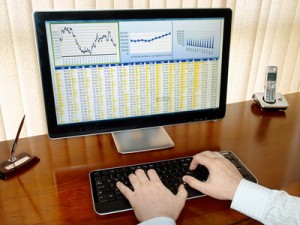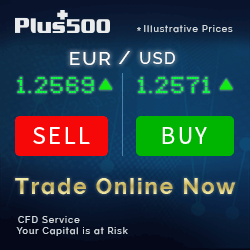 Trading Contract For Difference (CFD) instruments online represents what is quite possibly one of the best purposes ever conceived for making use of the power of the modern personal computer and high-speed Internet connections that are almost universally available.
Trading Contract For Difference (CFD) instruments online represents what is quite possibly one of the best purposes ever conceived for making use of the power of the modern personal computer and high-speed Internet connections that are almost universally available.
Starting a CFD trading business is fast and simple, offering multiple benefits when compared to other sources of income or other entrepreneurial ventures.
There are no employees involved, with all the complications these can present. There is no inventory, no lease payments for an office space or storefront, and no dependence on fickle customers. There is competition from other traders, but this is essential for the CFD markets to exist.
There are only six items needed to start up.
Most people already have the first two: a computer or other device for connecting and a high-speed connection to the Internet.
The computer need not be state-of-the-art by any stretch. A desktop or laptop from the last five years or so should be entirely adequate. Many CFD providers have mobile trading applications, which in some instances negate the need for a computer.
The Internet connection does need to be high-speed. Speeds of 1.5 Mb per second, preferably faster, are necessary because CFD prices can change rapidly. The lag between when a trader sends an order to his/her CFD provider and when that order is executed on a dial-up connection will result in considerable slippage, which is the difference This slippage is seldom beneficial to the trader.
The next requirement is risk capital. The required amount varies from provider to provider, but is not prohibitively large.
The critical factor is that trading funds must absolutely, unequivocally, be capital.
Even the best CFD traders who ever lived will at times find themselves in a trade that is experiencing a drawdown, that is, losing money. The psychological pressure that is created at the prospect of losing money that is required for survival and obligations will typically produce poor trading decisions with predictably bad outcomes.
A trading platform, that is, software, is next on the list of essential elements. These can be purchased, but most CFD providers will make one or more freely available for testing purposes and in the hope that a trader will open and fund an account, then trade, for which the CFD provider will earn a fee.
Next comes the CFD broker.
There are two main types: the Market Maker, who takes the opposite position to a client in a CFD transaction, and the Direct Market Access (DMA) provider, who matches the client’s order with a counter order from another DMA provider or a CFD funding source.
The selection of a CFD broker requires much thought, investigation and diligence. Competition for clients is intense in the extreme and not be taken lightly.
Finally, the last item needed for a CFD trading business is a trading plan, commonly referred to as a strategy or CFD trading strategies.
CFD prices can do one of three things: they can go up, they can go down or they can go sideways. CFD prices generally spend, under typical conditions, 20% of the time going up or down an 80% of the time going sideways. It therefore makes sense to have a minimum of two trading strategies, one for when prices are rising or falling and one for when prices are meandering along sideways. Simple strategies that can be adapted to different CFD markets can be completely adequate.
For a market that is going up or down, simply go with the flow. If the trend is up, buy. If the trend is down, sell. Please note that it does take practice and experience to recognize the direction of the trend.
For a sideways market, perhaps the best strategy of all is to avoid initiating a trade until a new trend develops. Again, it takes patience and experience to become properly adept at knowing when a CFD market is sideways and presents very little opportunity to profit from price changes. Many new online CFD traders fall prey to the idea that if they do not have a trade active, they are not doing their job.
That is not to say sideways markets are completely un-tradable.
The simple strategy commonly utilized in this instance is to sell at a level where prices cannot seem to go higher, resistance, and to buy at a level that has prevented them from going lower, support.
Again, practice, experience and a little bit of educated intuition are required to make an accurate assessment when support and resistance levels will hold and when they will be violated.
The advantage of these two basic strategies is that they are very easy to initiate and don’t require advanced education in economics to understand. In fact, the skills you need to trade CFDs are no different from those used in everyday life in the course of purchasing the items that are necessary or desirable for your existence.
The disadvantage to these strategies is that when they don’t work, and they are by no means infallible, self-doubt creeps into the trading decision process, impacting future trading outcomes. Of course, this same can be said of any trading strategy. This is why it is important to plan out your online CFD trading strategy beforehand and stick to your plan.
Trading CFDs online is an exceptional way to experience the benefits of self-employment, either as a supplemental or primary income source. It must never be forgotten, however, that CFD markets must be approached with respect and caution to ensure your longevity as a CFD trader.



